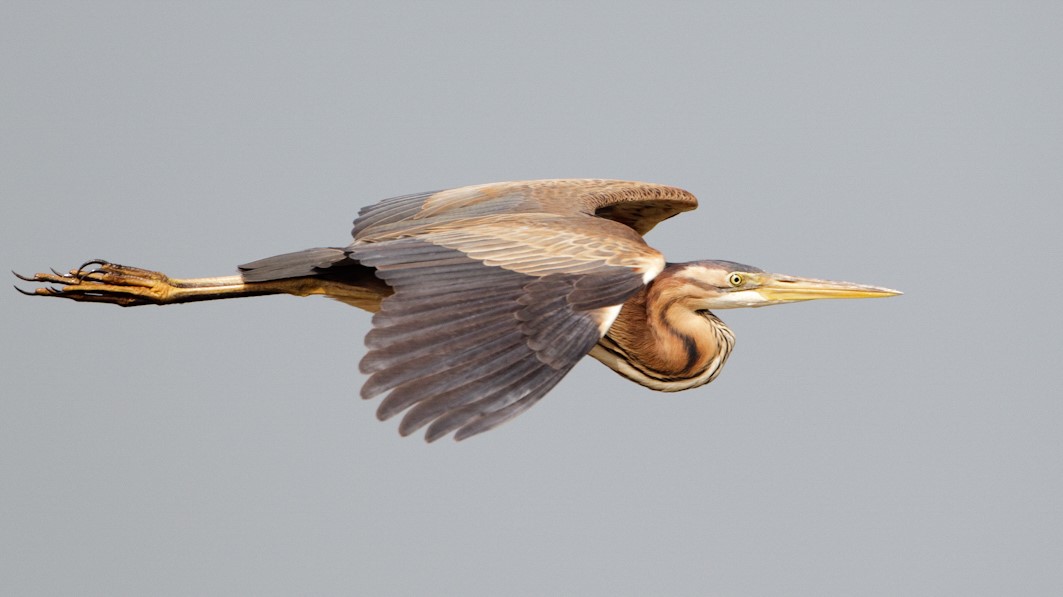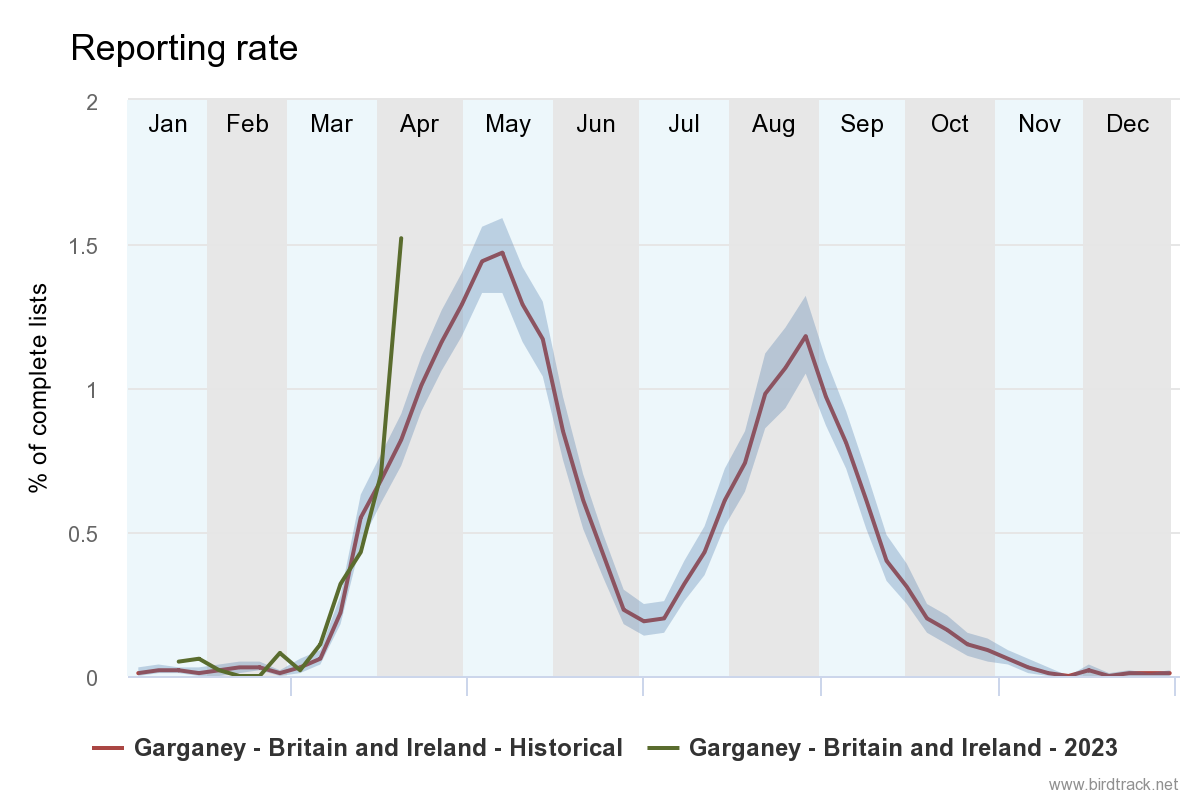
BirdTrack migration blog (14–20 April)
At this time of year, summer migrants are keen to get back to their breeding grounds as soon as possible to claim a territory and attract a mate. Many will still have a reserve of fat laid down earlier in the year in readiness for the forthcoming migration. This fat store not only powers them on their migration but can also be absorbed during periods when food may be scarce.
This means that, even when the conditions for migration are less than ideal, birds will still push northwards, and it is only if weather conditions become severe that migration halts altogether. The sometimes wet and windy weather from the past week was interspersed with more fine and dry days, and as a result migration continued relatively unaffected.
Across the Easter weekend, a steady stream of migrants took advantage of the sunny weather and many people managed to see several ‘firsts’ of the year. Sedge Warblers, Willow Warblers, Wheatears, Swallows, and Yellow Wagtails were all widely reported.
After a slow start in records, it was good to see an increase in the reports of Garganey, and the BirdTrack reporting rate leapt up as a result. All in all over 140 sites played host to this scarce breeding duck during the last week. If you are lucky enough to find one, it is always worth repeated visits over the summer to confirm if breeding took place. As with visits to all breeding birds, you should be careful to avoid disturbing them. Records of sensitive species such as Garganey are hidden from public outputs in BirdTrack because they can be especially susceptible to disturbance.

Scarcer herons made the headlines with an influx of both Purple and Night Heron, and record numbers of the latter.
Of the 21 or so locations across Britain and Ireland that hosted one of the exquisite Night Herons, three sites held two or more birds: there were two in West Yorkshire and three each at sites in Cork and Dorset. Could some of these birds stay and breed? The last successful attempt was in 2017, and the species has long been touted as a potential coloniser.
Night Herons have long been touted as a potential coloniser...could some of the birds reported in the previous week stay and breed?
Purple Herons turned up in similar numbers, with the lion’s share of records falling in the south-west counties of England. A single bird in Co. Kerry was a county first.
Other scarce birds seen last week included a male Kentish Plover in Northamptonshire – an exceptional inland record – and a Tawny Pipit in the Isles of Scilly, as well as a handful of Woodchat Shrikes and three Red-rumped Swallows.
The pick of the rarities is probably the Forster’s Tern in Somerset, while two Short-toed Treecreepers in Kent, a Scops Owl in Cork, an American Bittern in Kerry, and a Dark-eyed Junco in Shetland were also hot contenders.
Looking ahead

The weather forecast for the coming weekend looks to be settled for many parts, as high pressure begins to build and the temperatures also rising; with no real bad weather to contend with spring migration should continue at a reasonable pace.
Look out for Garden Warbler, Nightingale, Lesser Whitethroat, Redstart, and Whimbrel which all start arriving around now; any likely habitat is worth searching.
Nightingale song
Lesser Whitethroat song
Rain on Friday is likely to ground any migrant birds arriving from the south as they seek shelter, so getting out just before the rain or during any sunny periods between showers could prove fruitful.

A band of rain will skirt along southern Britain early on Friday before more widespread rain across much of Britain and Ireland. This rain is likely to ground any migrant birds arriving from the south as they seek shelter, so getting out just before the rain or during any sunny periods between showers could prove fruitful.
Over the weekend the rain clears for many parts, with the exception of the odd April shower, and the winds remain light and start to swing to the south by Sunday. These conditions will enable migrants to continue their arrival from the near continent, and for those that have already made landfall here, to push further north. These light winds are good for visible migration with Swallows, House Martins, and Sand Martins in particular taking advantage of the conditions.
The more settled conditions could lead to a few overshooting scarcities such as Western Subalpine Warbler, Red-rumped Swallow, Serin, Tawny Pipit, and Pallid Swift. There has already been a good passage of Bee-eater across the Strait of Gibraltar and through Portugal and southern Spain in the last week, so look out for birds turning up during the warmer weather of Monday and Tuesday.
Add your records to BirdTrack
Don’t forget to let us know what you’ve found!
Adding your records to BirdTrack is quick and easy and gives us valuable information about bird migration.
Find out more







Share this page